The Sherman County Museum in Moro, Oregon, includes a display of Indian (primarily Tenino) artifacts.
When the Euro-American invasion of what was to become Sherman County, Oregon, began in the 1770s, the area was occupied by several Tenino bands which moved seasonally between summer and winter villages. The four Sahaptin-speaking groups were: Dalles Tenino, Tygh, Wyam, and Tukspush.
 Shown above is the annual food cycle for the Plateau Indian nations.
Shown above is the annual food cycle for the Plateau Indian nations.
Winter villages were generally located in river canyons, an area sheltered from the cold winds. Winter was a time for storytelling as well as making and repairing tools, clothing, baskets, and other items. In the springs, the bands would separate and move to different resource areas. In July, they would move to the summer villages.

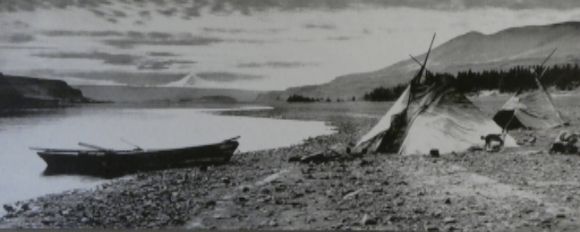 Shown above is a temporary fishing camp.
Shown above is a temporary fishing camp.
According to the display:
“The Indians’ geographic claim to tribal lands was forever altered with the arrival of explorers and settlers. By the treaty of 1855, the Tenino bands and others relinquished claims to their lands in exchange for relocation to and exclusive use of the Warm Springs reservation, as well as reserved rights (hunting, fishing, gathering and grazing) on the ceded lands.”
At the time of the treaty council, many of the Indians were away from the area preparing for the annual root harvest and the Americans had been informed that this was not a good time for the meeting. At the beginning of the council, one American—John Edwards—warned the Indians that the purpose of the council was to rob them of their land. He was arrested and placed in the guardhouse.
At the council, the Americans told the Indians:
“We have found that the white man and Indians cannot long live together in peace, that it is better that lines should be drawn so that the white man will know where his land is and the Indian where his land is, we may then live without quarreling.”
The Americans told the Indians that the reservation designated for them contained good farming land and that it was close to their fishing stations on the Columbia River. Both statements were false. The American negotiators were not concerned with fairness or with truth: their goal was to force the Indians to accept the treaty offered by the United States.
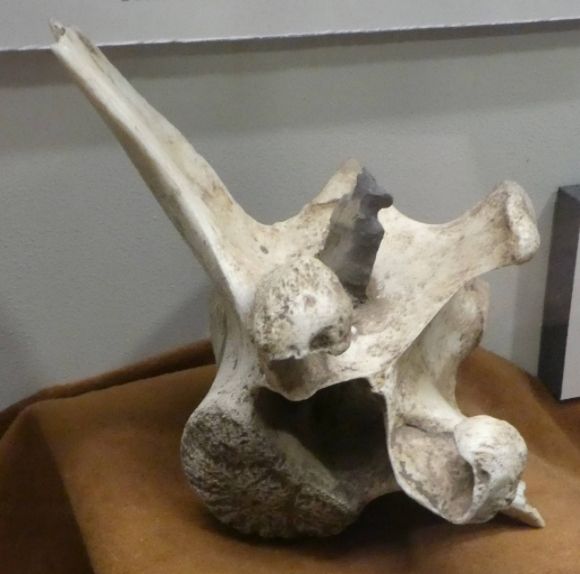 An atlatl spear point is embedded in the vertebra of an immature elk. This dates to 2,000 and 5,000 years ago.
An atlatl spear point is embedded in the vertebra of an immature elk. This dates to 2,000 and 5,000 years ago. 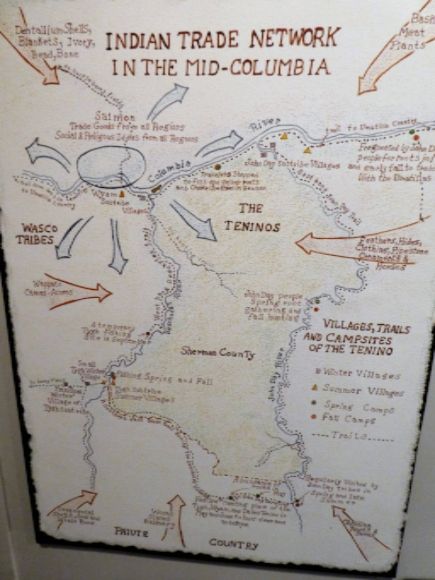 Long-distance Indian trade developed thousands of years prior to the European invasion.
Long-distance Indian trade developed thousands of years prior to the European invasion.
According to the display:
“On well-used trails, tribes came to fish and trade from all directions at the salmon-abundant waters of the Great Falls of the Columbia at Celilo, now flooded by water impounded by The Dalles Dam.”
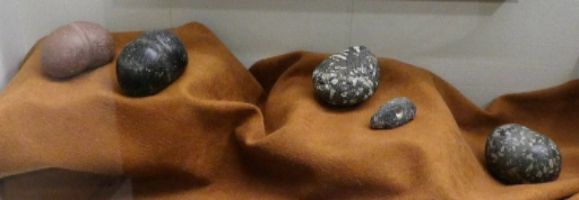 The stone artifacts shown above include what appear to be hammerstones and an atlatl weight.
The stone artifacts shown above include what appear to be hammerstones and an atlatl weight. 
 Shown above are shaft straighteners used for straightening arrows and spears.
Shown above are shaft straighteners used for straightening arrows and spears. 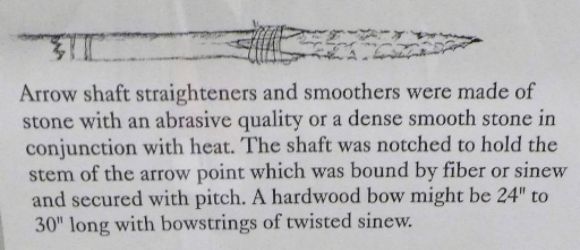
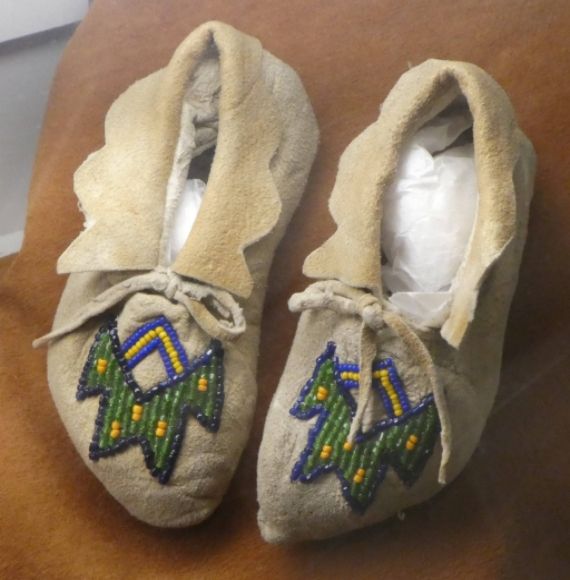
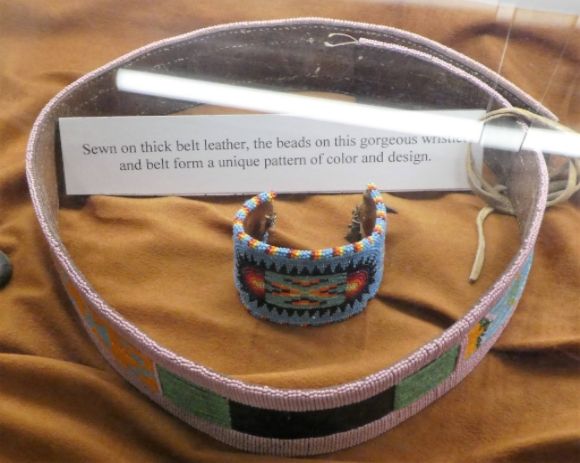
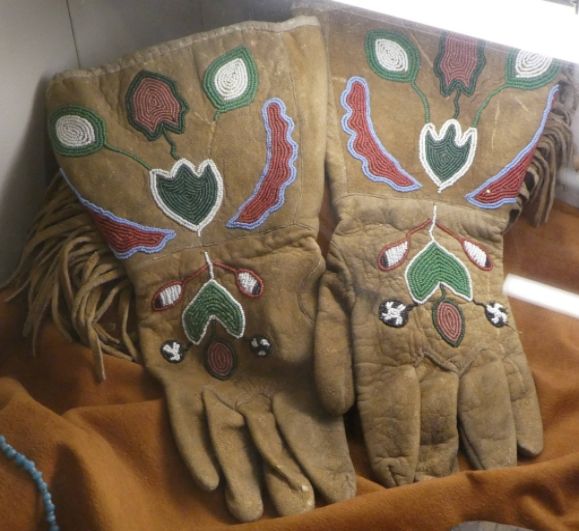
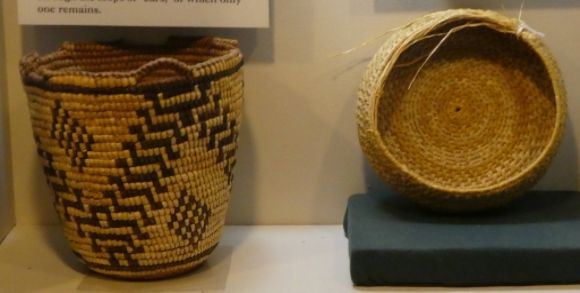 The basket on the left is a child’s berry basket and the basket on the right is a small basket made for the tourist trade.
The basket on the left is a child’s berry basket and the basket on the right is a small basket made for the tourist trade. 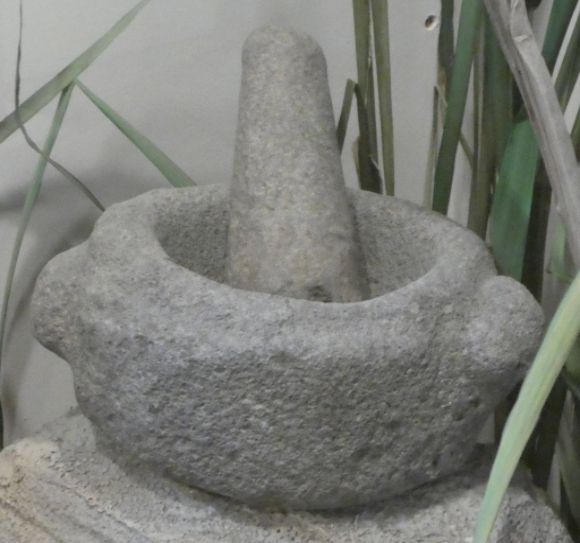 Shown above is a stone mortar and pestle.
Shown above is a stone mortar and pestle. 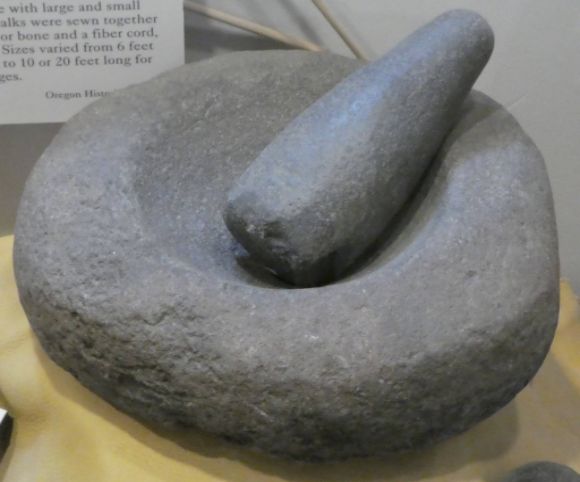 Shown above is a stone mortar and pestle.
Shown above is a stone mortar and pestle. 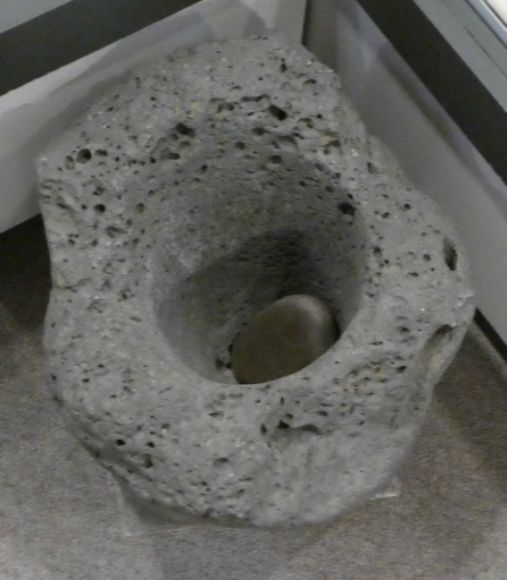 Shown above is a large mortar and pestle.
Shown above is a large mortar and pestle. 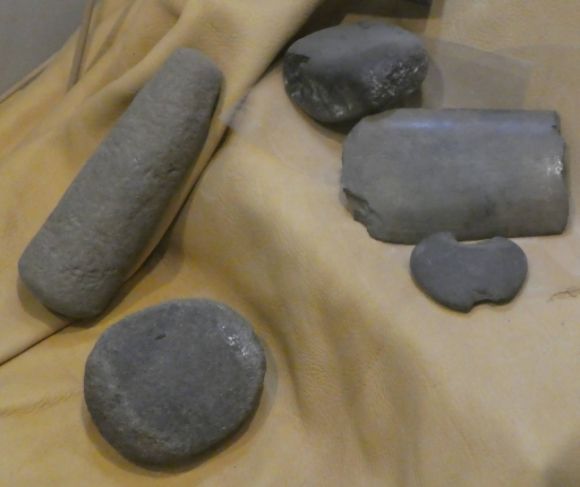 Shown above are stones used in tanning skins.
Shown above are stones used in tanning skins. 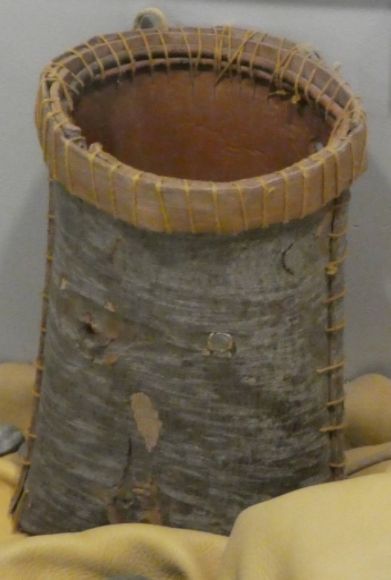 Shown above is a reproduction of a cedar bark berry basket.
Shown above is a reproduction of a cedar bark berry basket. 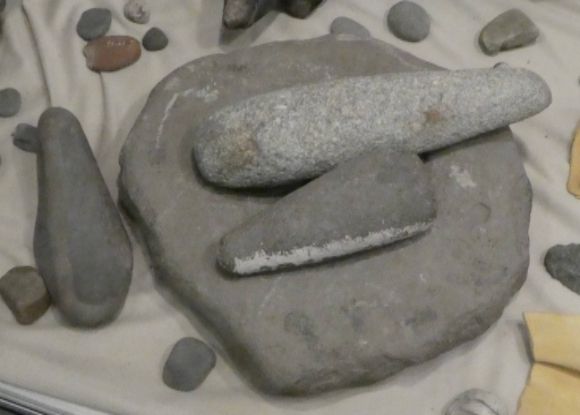 Shown above are stone tools for processing plant foods.
Shown above are stone tools for processing plant foods. 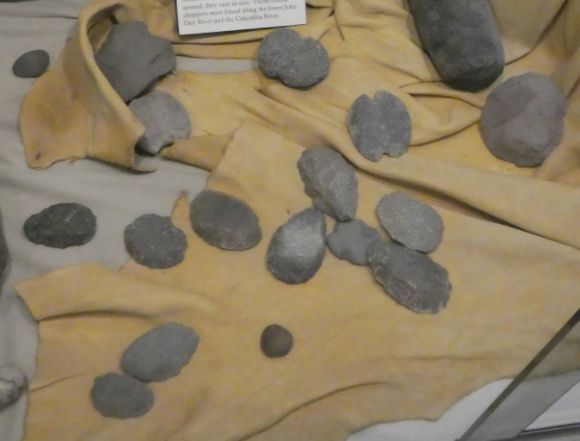 Shown above are cobble choppers. These were a general purpose tool used for chopping and scraping.
Shown above are cobble choppers. These were a general purpose tool used for chopping and scraping. 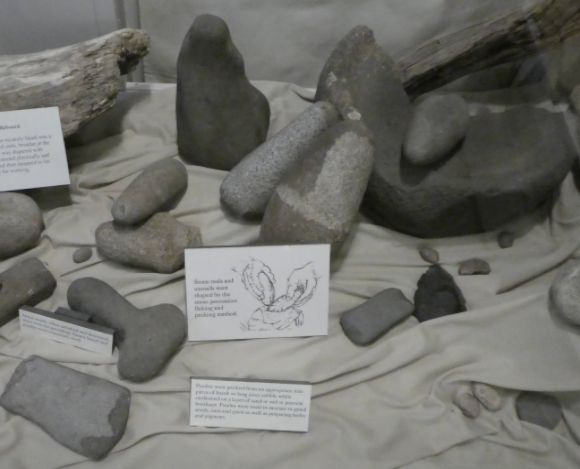 Shown above are some stone tools.
Shown above are some stone tools. 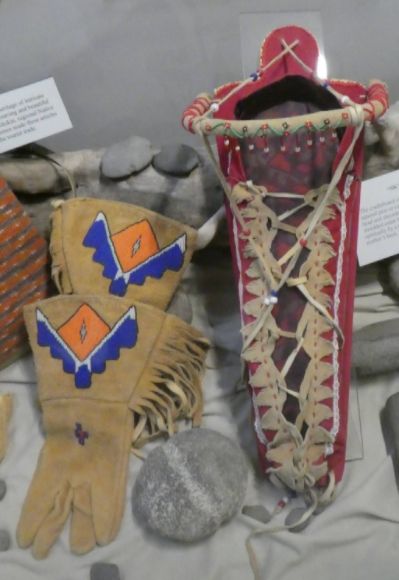 Shown above is a cradleboard (on right), some beaded gauntlets, and a stone hammer head.
Shown above is a cradleboard (on right), some beaded gauntlets, and a stone hammer head.
According to the display:
“The cradleboard into which the child was securely laced was a tapered pine or cedar plank with rounded ends, broader at the head and shoulders. Long ago the baby was diapered with shredded cedar bark or cattail fluff, protected physically and spiritually by a rosewood ‘bumper’ and then strapped to his mother’s back, leaving her hands free for working.”
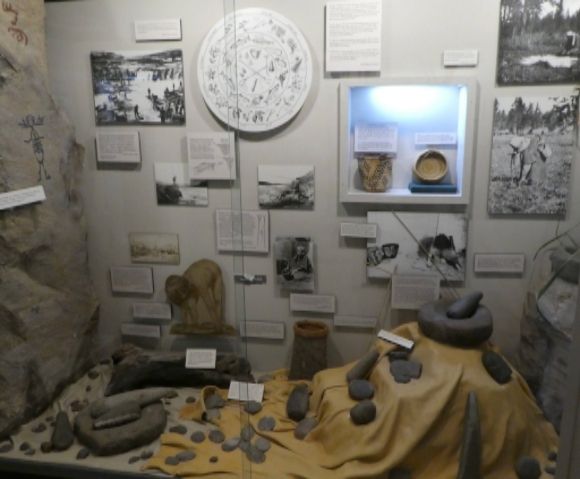

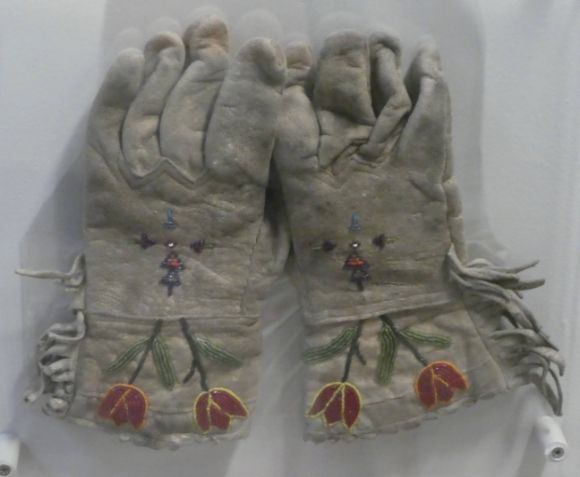
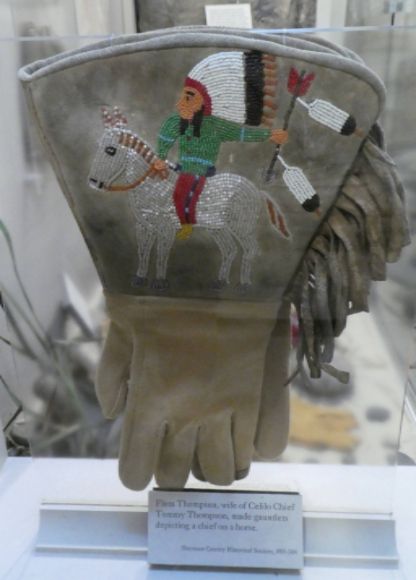
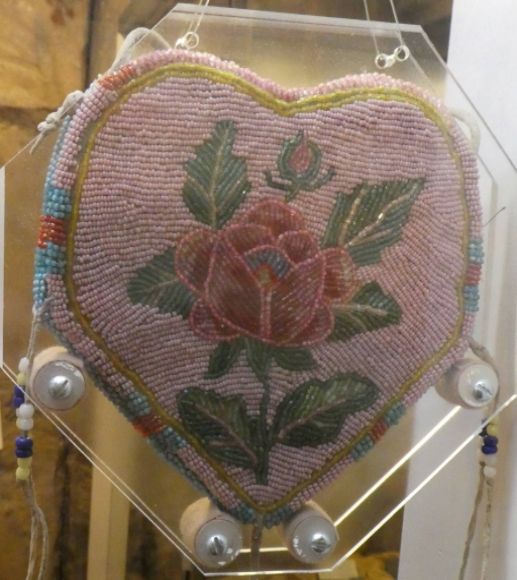

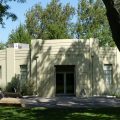

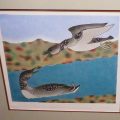
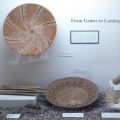
Leave a Reply